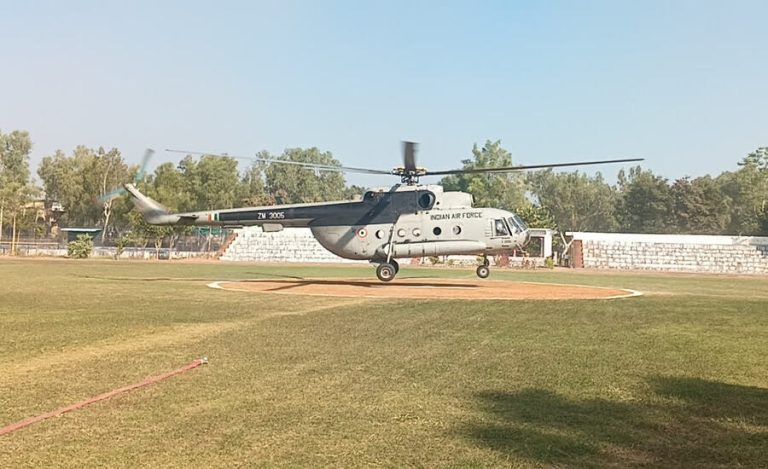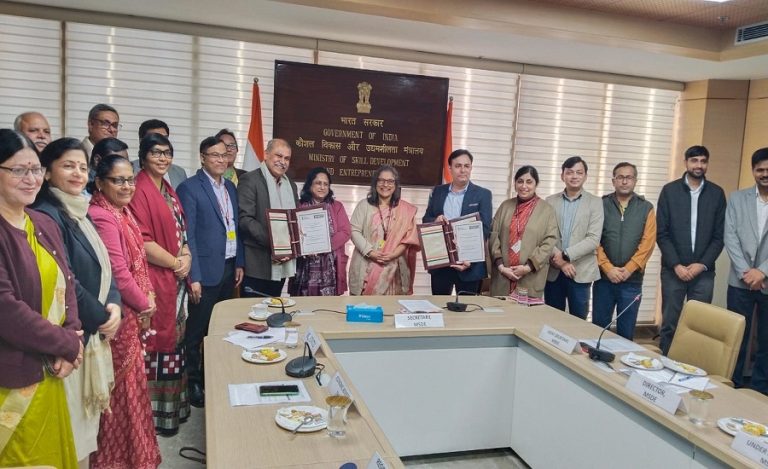New Delhi: In what marks a significant milestone for defence modernization efforts, the United States has given the green signal for a massive $93 million defence equipment sale to India. The deal includes cutting-edge Javelin anti-tank guided missiles and Excalibur precision-guided artillery projectiles that will dramatically enhance the Indian Army’s combat readiness.
The Defence Security Cooperation Agency (DSCA) made the official announcement on November 20, 2025, confirming that the US State Department has approved this crucial military sale.
Full Details of India US defence Deal Javelin Excalibur
The defence deal is divided into two major components that will transform India’s battlefield capabilities.
Javelin Anti-Tank Missile System Worth $45.7 Million
The first part includes the advanced FGM-148 Javelin anti-tank guided missile system. India will receive 100 Javelin missiles along with 25 command-launch units.
The package also contains one fly-to-buy round for testing purposes. Additionally, the deal covers training aids, simulation rounds, spare parts, and complete lifecycle support to ensure smooth operations.
The Javelin system is manufactured jointly by American defence giants RTX Corporation (formerly Raytheon) and Lockheed Martin. This shoulder-fired weapon has earned global recognition for its deadly accuracy against tanks and armoured vehicles.
Excalibur Precision Artillery Rounds Worth $47.1 Million
The second component of this defence agreement brings 216 M982A1 Excalibur tactical projectiles to India’s artillery arsenal.
These GPS-guided rounds represent the latest in precision artillery technology. The package includes Portable Electronic Fire Control Systems (PEFCS) with Improved Platform Integration Kit, primers, propellant charges, and technical support.
The Excalibur rounds will work seamlessly with India’s existing 155mm artillery guns, including the M777 howitzers, K9 Vajra, Dhanush guns, and other systems already in service.
Why This Deal is a Game-Changer for Indian Army
According to the DSCA statement, this defence sale will dramatically improve India’s ability to counter both current and emerging threats.
The agency emphasized that these precision weapons will significantly increase ” first strike accuracy” in India’s military brigades. This means Indian forces can hit targets with pinpoint accuracy right from the first shot, saving precious ammunition and reducing collateral damage.
The DSCA also clarified that India will face no difficulty in absorbing these advanced weapons into its armed forces, thanks to existing training infrastructure and compatibility with current military systems.
This $93 million deal represents another step in India’s comprehensive military modernization program under the “Make in India” and “Atmanirbhar Bharat” initiatives.
While these weapons are imported, discussions are ongoing for potential co-production and technology transfer arrangements. In February 2025, India and the US announced plans to explore co-production of Javelin missiles within India.
Such arrangements would allow Indian defence companies like Bharat Dynamics Limited (BDL) to eventually manufacture these advanced weapons domestically, creating jobs and building indigenous defence manufacturing capacity.
The deal also reflects the deepening strategic partnership between India and the United States in the defence sector. Over recent years, India has emerged as one of the largest buyers of American military equipment.
Understanding the Javelin Missile: A Tank Destroyer Like No Other
The FGM-148 Javelin represents third-generation anti-tank missile technology that has proven itself on battlefields worldwide.
This man-portable weapon system uses ” fire-and-forget” technology, meaning once a soldier locks onto a target and fires, the missile guides itself automatically. The soldier can immediately take cover or move to a new position.
Key Features That Make Javelin Deadly
The Javelin employs a top-attack profile, meaning it climbs high into the air before diving down onto tanks from above. Tank armor is weakest on the roof, making this approach devastatingly effective.
The missile uses advanced infrared guidance to lock onto heat signatures. It can operate day or night, in all weather conditions, giving Indian troops 24/7 combat capability.
With a range of 2.5 to 4 kilometers, Javelin allows infantry soldiers to destroy enemy armor from safe distances. The system weighs about 22 kilograms total, making it truly man-portable for battlefield mobility.
The Javelin earned the nickname ” Saint Javelin” during the Ukraine conflict, where it successfully destroyed hundreds of Russian tanks including advanced T-72 and T-90 models.
This combat-proven track record makes it one of the most sought-after anti-tank weapons globally.
Excalibur Rounds: Precision Artillery Revolution
The M982A1 Excalibur represents a quantum leap in artillery accuracy. Where traditional artillery shells might land 150 meters away from their intended target, Excalibur hits within just 2 meters.
How Excalibur Changes the Artillery Game
These GPS-guided projectiles use folding glide fins to ” fly” toward their targets after being fired from standard 155mm artillery guns. The guidance system constantly adjusts the shell’s path mid-flight for pinpoint accuracy.
Excalibur can reach targets 40 to 57 kilometers away, depending on the artillery system used. This extended range keeps Indian artillery safe while striking deep into enemy territory.
One Excalibur round can accomplish what would normally require 10 to 50 conventional artillery shells. This saves enormous amounts of ammunition, reduces logistics burden, and dramatically cuts down time to destroy enemy targets.
The multi-function fuze can be programmed before firing to explode in the air (for targeting troops), on impact (for vehicles), or after penetrating (for bunkers and fortifications). This versatility makes Excalibur effective against virtually any target type.
India previously procured 600 Excalibur rounds in 2019 and used them extensively during recent military operations. The new batch of 216 rounds will replenish stocks and expand operational capacity.
Strategic Significance: Strengthening India-US Defence Partnership
The DSCA highlighted that this sale supports American foreign policy and national security objectives by strengthening the US-India strategic relationship.
India continues to be recognized as “a major defence partner” and ” an important force for political stability, peace, and economic progress in the Indo-Pacific and South Asia regions.”
The agency emphasized that this weapons sale ” will not alter the basic military balance in the region” but will help India strengthen its homeland defence and deter regional threats.
RTX Corporation, headquartered in Arlington, Virginia, will serve as the principal contractor for both weapon systems. The company brings decades of experience in manufacturing precision military equipment.
No Additional US Personnel Required in India
In a significant detail, the DSCA confirmed that implementing this defence deal will not require deploying any additional US Government or contractor representatives to India.
This indicates that India already possesses the technical expertise and infrastructure to handle these advanced weapon systems independently. The existing training programs and maintenance capabilities will be sufficient.
The sale will also have “no adverse impact” on US defence readiness, meaning America can fulfill India’s requirements without compromising its own military preparedness.
Congress Notified, India US Defence Deal Javelin Excalibur Moving Forward
The Defence Security Cooperation Agency has delivered the required certification to the US Congress, officially notifying them of this proposed military sale.
This notification is a standard procedure under US arms export rules. Unless Congress raises objections within a specified period, the deal will automatically proceed to implementation.
Currently, the US Government is not aware of any offset agreement proposed in connection with this sale. However, any such arrangements could be negotiated directly between India and the contractor companies later.
Filling Critical Gaps in Indian Army Arsenal
The Indian Army has faced a persistent shortage of modern anti-tank guided missiles, with an estimated requirement gap of 68,000 missiles and 850 launchers.
Previous emergency procurements of Israeli Spike missiles helped fill gaps temporarily during border tensions with China. However, a long-term, sustainable solution has remained elusive.
The Javelin deal, combined with India’s indigenous Man-Portable Anti-Tank Guided Missile (MPATGM) under development by DRDO, will help address these critical shortfalls.
Similarly, the additional Excalibur rounds will ensure that India’s artillery units maintain adequate precision ammunition stocks for future contingencies along both the western and northern borders.
What This Means for India’s Defence Modernization
Regional Security Context of India US Defence Deal Javelin Excalibur
- This defence deal comes at a time when India faces evolving security challenges along its borders with both Pakistan and China.
- The Javelin missiles will prove particularly valuable in mountainous terrain along the Line of Actual Control (LAC) with China, where Chinese armoured vehicles pose a significant threat.
- The precision Excalibur artillery rounds will enhance India’s ability to conduct surgical strikes with minimal collateral damage, an increasingly important capability in modern warfare.
- The advanced weapons will strengthen India’s deterrence posture and provide battlefield commanders with flexible, precision options for various combat scenarios.
Way Forward
- With Congressional approval expected to proceed smoothly, delivery of these weapon systems could begin in the coming months.
- Indian Army units will undergo comprehensive training programs to master these advanced systems. The training aids and simulation rounds included in the package will accelerate the learning curve.
- Integration with existing military platforms and command systems will ensure these weapons fit seamlessly into India’s overall defence architecture.
- This deal also paves the way for future defence cooperation between India and the United States, with more advanced systems and technology transfers potentially on the horizon.
- As India continues its journey toward becoming a global defence manufacturing hub, partnerships like this one will play a crucial role in accessing cutting-edge military technology while building domestic capabilities.



























